17 Aug 2019
Indonesia Independence Day 2019
Today’s Doodle illustrated by Indonesia-based guest artist Hari Prast, celebrates Indonesia’s Independence Day, also known as Hari Kemerdekaan, colloquially known as Tujuhbelasan [[“the Seventeenth”). On this day in 1945, the Indonesian leader Soekarno read a proclamation at his home in Jakarta, declaring the independence of Indonesia.
August 17th was also the date when the red and white national flag, known to locals as Sang Saka Merah-Putih, was flown for the first time.
Indonesia is the world’s 4th most populous country, with over 300 different ethnic and linguistic groups. Hari Kemerdekaan is a time for members of these diverse groups to come together in joyous celebration, holding ceremonies and festive events throughout the country that have become cherished traditions.
The day starts with flag-hoisting ceremony, followed by a parade and local games competitions like balap karung [a two-person gunny sack race], panjat pinang [where contestants climb up a greased pole or tree to grab a prize at the top], and many more local games.
Community residents also work together to make Gapura gates, as shown in today’s Doodle. These colorful gates are created out of repurposed materials, beautifying the entrances to their village neighborhoods and celebrating Indonesian Independence together.
Embodying a spirit of collaboration [gotong royong] that lies at the very core of Indonesian values, Gapuras serves as a reminder for Indonesians to work together for a better nation on Independence Day—and every day of the
Results 3,251 to 3,300 of 17072
Thread: Google doodles
-
05-18-2021, 05:29 PM #3251
 Senior Member
Senior Member

- Join Date
- Oct 2016
- Posts
- 20,558
- Rep Power
- 464
-
05-18-2021, 05:31 PM #3252
 Senior Member
Senior Member

- Join Date
- Oct 2016
- Posts
- 20,558
- Rep Power
- 464
27 Aug 2019
Cesária Évora’s 78th Birthday
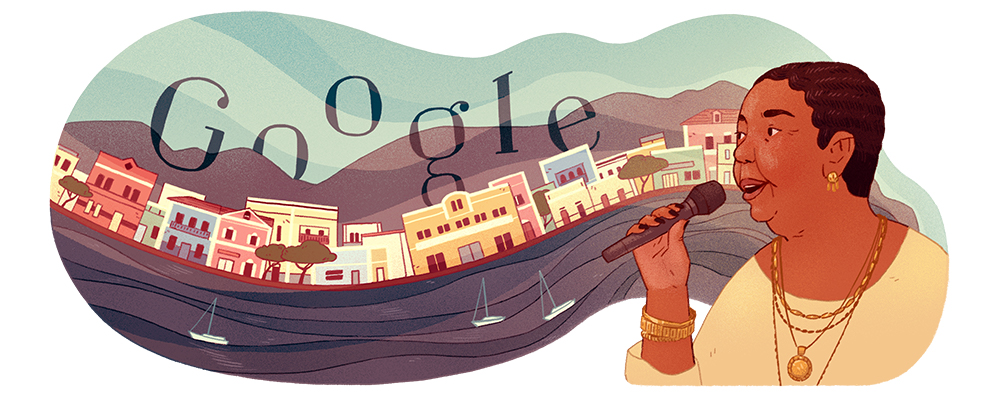
Today’s Doodle celebrates world-renowned Cape Verdean singer Cesária Évora. Born in Mindelo, a port city on the island of São Vicente off the West African coast on this day in 1941, Cesária grew up in an orphanage and began singing in bars and cruise ships as a teenager. Her specialty was morna, the bluesy national music of Cape Verde, which she would bring to an international audience—earning many accolades, including a Grammy Award.
Évora’s poignant voice was perfectly suited to morna music, and her life experiences imbued her songs of love and loss with unmistakable feeling. Known for performing barefoot, she sang in Kriolu, a blend of Portugese and African dialects, accompanied by piano, guitar, or cavaquinho, a four-stringed Portuguese guitar. Although she was invited to sing on local radio, and two of these recordings were released in Europe, she could not support herself solely with her music career and retired from singing for many years.
In her mid-40s, Évora traveled to Portugal for a recording session, where she impressed Josè Da Silva, a French concert promoter of Cape Verdean descent. Da Silva invited her to Paris, and starting in the late 1980s, Évora recorded several albums for his label, starting with La Diva aux pieds nus [“The Barefoot Diva”], which brought her to a new audience.
Évora went on to tour the world and won a 2003 Grammy Award for her album Voz d’amor, as well as two Kora awards from the African music industry.
Never distracted by stardom, she worked hard even in declining health and used her fame to help others, serving as an ambassador for the UN’s World Food Program. The airport on her home island of São Vicente was named in her honor, with a statue and mural commemorating the beloved “Queen of Morna.”
-
05-18-2021, 05:40 PM #3253
 Senior Member
Senior Member

- Join Date
- Oct 2016
- Posts
- 20,558
- Rep Power
- 464
27 Aug 2019
Eduardo Ramírez Villamizar’s 97th Birthday

Today’s Doodle celebrates the life and work of the esteemed Colombian artist Eduardo Ramírez Villamizar, widely considered one of the most notable sculptors of his country. Born in Pamplona on this day in 1922, Villamizar was the son of a jeweler who studied architecture before achieving worldwide acclaim for his paintings and sculptures.
Exposed to international modernism on trips to Paris and New York during the 1950s, he met with early success. One of his pieces, The Black and White Painting, was acquired by New York’s Museum of Modern Art in 1956, and two years later he won a Guggenheim award.
Upon returning home, he became a pioneer of abstract art in Colombia. His 1952 solo exhibition at the National Library of Bogotá was one of the first shows of abstract painting, and his 1957 Composition in Ocres was the country’s first non-objective mural. The curved shapes of his large El Dorado relief created for Banco de Bogotá were covered in gold leaf, a nod to pre-Columbian figures and Latin American goldsmithing. In later sculptural works, he translated the distinctive shapes of pre-Columbian art into abstract planes.
Villamizar represented Colombia at the 1969 São Paulo Biennial, winning the second international prize. He created the monumental 1974 piece Sixteen Towers atop the Bogotá hills, and the Colombian government awarded him the prestigious Cruz de Boyacá. His legacy lives on at the Eduardo Ramírez Villamizar Museum of Modern Art in his hometown, where much of the artist’s work is housed in a grand colonial home in Pamplona’s central square.
-
05-18-2021, 08:13 PM #3254
 Senior Member
Senior Member

- Join Date
- Oct 2016
- Posts
- 20,558
- Rep Power
- 464
4 Sept 2019
50th Anniversary of Mexico City Metro

Today’s Doodle celebrates the 50th anniversary of one of the world’s great public transportation systems, the Mexico City Metro. On this day in 1969, the first subway line of the Sistema de Transporte Colectivo began running east and west from Zaragoza to Chapultepec.
Today the Metro’s 12 lines correspond with 12 different colors, as shown in today’s Doodle artwork, with connections to light railways in the south and cable cars in the north, crisscrossing the most populous metropolitan area in the Western Hemisphere and transporting some 5 million passengers every day.
When the idea for the Metro was first proposed in the 1950s, Mexico City’s population was much smaller than it is today, but the bus and tramway system was severely strained. To address the issue, the city government approved the Metro construction plan in 1967, with the 1968 Olympics just around the corner.
It was no small challenge for engineer Bernardo Quintana to tunnel underneath a mega city built over a lake, in an area with a history of seismological activity as well as archaeological riches. Metro construction crews have unearthed some remarkable finds, including an 11,000-year-old mammoth skull, which is now on display at the Talismán station; a circular pyramid dedicated to Ehécatl, the Aztec God of wind, around which the Pino Suárez station was built; and in 2010, a 500-year-old Aztec gravesite.
Each of the 195 Metro stops has its own color and symbol, designed to make the system easy to navigate. La Raza station boasts a 600-meter-long [1969-feet-long] science museum, the Túnel de la Ciencia, stimulating the minds of passengers as they walk between lines 3 and 5. Other stations are designed to resemble the Art Nouveau entrances to the Paris Metro. Rubber wheels on many lines keep noise to a minimum, and the fare to ride can be as low as 5 pesos.
-
05-18-2021, 08:17 PM #3255
 Senior Member
Senior Member

- Join Date
- Oct 2016
- Posts
- 20,558
- Rep Power
- 464
7 Sept 2019
Brazil Independence Day 2019

Today’s Doodle celebrates Sete de Setembro, as Independence Day is known in the Federative Republic of Brazil. South America’s largest and most populous country staked its claim to become an independent nation on this day in 1822 when Prince Pedro, the 23-year-old son of Portuguese King Dom João VI, declared himself Dom Pedro I, Emperor of Brazil. A treaty with Portugal and Britain in 1825 made it official.
The nation’s flag files throughout Brazil today, displaying one of the world’s most intricate flag designs. The green field stands for the lush natural beauty of the country, surrounding a yellow diamond that symbolizes the country’s rich gold deposits. The blue globe in the center is filled with stars, each one representing a different Brazilian state or Federal District. The stars, each representing one of the 27 states of Brazil, are arranged to approximate the night sky over Rio de Janeiro on the evening of November 15th, 1889—another national holiday known as Republic Day. Finally, the band across the globe’s equator bears the words ORDEM E PROGRESSO, meaning “order and progress.”
The holiday is marked with parties, concerts, and parades in most Brazilian state capitals. Many Brazilians enjoy the day by getting together with family and friends, taking the holiday to rest and relax, amongst flags and banners displaying their national pride.
-
05-18-2021, 08:19 PM #3256
 Senior Member
Senior Member

- Join Date
- Oct 2016
- Posts
- 20,558
- Rep Power
- 464
7 Sept 2019
Celebrating Marcelle Ferron

“My aim has always been modest. I wanted to transform the arranged marriage [of art and architecture] into a love match.” —Marcelle FerronToday’s Doodle celebrates the life and work of the renowned Canadian painter, sculptor, and glassmaker, whose famous installation in Montreal’s Vendôme station was unveiled on this day in 1981. Marcelle Ferron’s striking design combined colorful stained glass with a spiraling stainless steel sculpture, a unique style that inspired the Doodle’s art.
Born in 1924, Ferron studied at the École des beaux-arts de Québec, but left upon realizing she was unable to find answers to her questions about modern art. Upon meeting Québec abstract painter Paul-Émile Borduas, she joined his Automatiste group and became one of the youngest artists to sign their 1948 manifesto Refus global. Ferron went on to spend 13 years painting in Paris, exhibiting her work at the 1961 São Paulo Biennial in Brazil, where she won a silver medal.
Her meeting with glassmaker Michel Blum sparked an interest in glass as an art medium. Over time, she devised her own methods, building “walls of light” connected by invisible joints that allowed her to create large planes of color. These innovative techniques can be seen in her mural for Expo 67 and public commissions in the Champ-de-Mars train station, Sainte-Justine Hospital, and the Granby courthouse.
Throughout her 50-year career, Ferron became one of Canada’s most important contemporary artists and was made a Knight of the National Order of Québec in 1985, then promoted to Grand Officer in 2000. This restless visionary’s achievements blazed a trail for women aspiring to make a mark in what was a traditionally male-dominated space.
-
05-18-2021, 08:24 PM #3257
 Senior Member
Senior Member

- Join Date
- Oct 2016
- Posts
- 20,558
- Rep Power
- 464
31 January 2019
Celebrating Nasi Lemak
Today’s Doodle celebrates the rich, fragrant, and spicy dish, known as Nasi Lemak. The dish — considered the national dish of Malaysia and widely eaten year-round — is what many Malaysians start their day with. Also popular in Singapore and Thailand, the humble delicacy is believed to have originated as a hearty farmer’s breakfast on the west coast of the Malaysian peninsula.
Although the name translates from Malay as “rich rice” [a reference to the coconut milk included in the recipe] there is another origin story for the name. According to legend, the daughter of a widow named Mak Kuntum accidentally spilled coconut milk into the rice pot. “What did you cook?” Mak asked and her daughter answered. "Nasi le, Mak!" [Rice, mother!]
There are many variations of the dish across the multiethnic melting pot of Malay, Chinese, Indian, and other indigenous and imported cultures, but the fundamental recipe — featured in today’s video Doodle — is rice cooked with santan or coconut milk and flavored with pandan leaf and galangal root, served with ikan bilis [fried anchovies], crispy peanuts [skin on], sliced cucumber, hard-boiled egg, and sambal [hot sauce] or a splash of tamarind juice, with an optional piece of fried chicken or beef rendang on the side. Sold at roadside stalls wrapped in a “bungkus” of banana leaf or brown paper, Nasi Lemak is so popular it’s also eaten for lunch and dinner, too!
-
05-18-2021, 08:30 PM #3258
 Senior Member
Senior Member

- Join Date
- Oct 2016
- Posts
- 20,558
- Rep Power
- 464
31 Jan 2019
Celebrating Mercedes Sosa
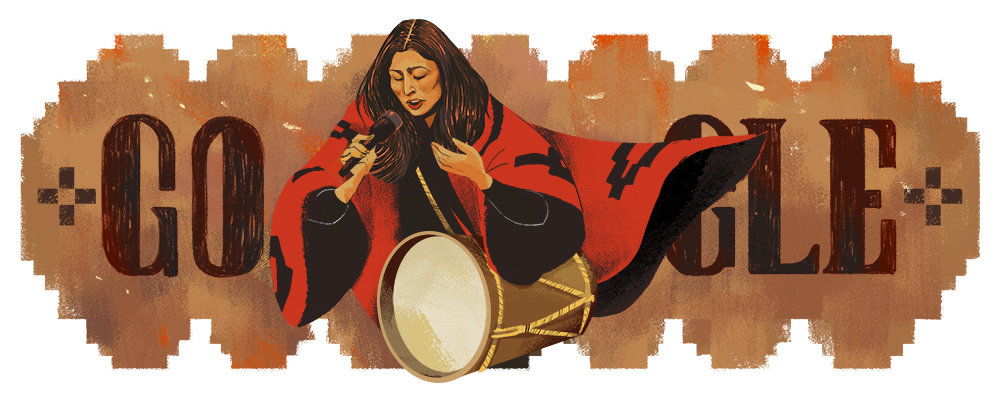
"I never thought that I would sing for a living," said Mercedes Sosa, the powerful Argentinian vocalist widely known as “the voice of the voiceless ones.” Also known as “La Negra” due to her long, black hair, Sosa’s powerful voice afforded her opportunities to perform at Lincoln Center and Carnegie Hall in New York City, as well as the Sistine Chapel and the Colosseum in Rome. A driving force behind the “Nueva Canción” movement, her songs married traditional South American folk music with powerful lyrics advocating for human rights.
Born on July 9, 1935 in the northern Argentine province of Tucumán, Mercedes Sosa’s family lineage came from the indigenous Aymara people. Her heritage deeply influenced her stylistically and by 15, she won a radio talent contest for her traditional folk music. A dramatic tipping point of her career happened on this day in 1965, when singer Jorge Cafrune invited Sosa on stage during his set at Argentina’s renowned Cosquín Folk Festival. Her performance received a massive ovation and by the following year, she had signed a recording contract.
Many of Sosa's best-known songs were written by others, but her performances of songs like Violeta Parra’s "Gracias a la Vida" [[Thanks to Life) and Horacio Guarany’s “Si Se Calla El Cantor” [[If the Singer is Silenced) helped catapult her into fame. She released some 70 albums over the course of nearly a six-decade career, exploring diverse genres such as Argentinian tango, Cuban nueva trova, Brazilian bossa nova, rock, and sacred music. In later years, she collaborated with artists such as Luciano Pavarotti, Sting, Joan Baez, and even Shakira.
Fearlessly singing truth to power, she went into exile from her homeland for several years and was finally able to return home in 1982. She continued to perform around the world and later became a UNESCO goodwill ambassador.
-
05-18-2021, 08:35 PM #3259
 Senior Member
Senior Member

- Join Date
- Oct 2016
- Posts
- 20,558
- Rep Power
- 464
8 Feb 2019
Friedlieb Ferdinand Runge’s 225th Birthday

Today’s Doodle celebrates Friedlieb Ferdinand Runge, a German analytical chemist whose place in history resulted in large part from an accident followed by a chance encounter.
Runge was born outside of Hamburg on this day in 1795. The son of a Lutheran pastor, he expressed interest in chemistry from an early age and began conducting experiments as a teenager.
During one such experiment, Runge accidentally splashed a drop of belladonna extract in his eye, taking note of its pupil-dilating effects. Ten years later, while studying under renowned chemist and inventor Johann Wolfgang Döbereiner at the University of Jena, Runge was asked to reproduce belladonna’s effects as part of a demonstration for one of Döbereiner’s friends: the writer and polymath Johann Wolfgang von Goethe. Impressed by the 25-year-old chemist, Goethe handed Runge a bag of rare coffee beans and suggested he analyze their chemical makeup. Shortly thereafter, Runge isolated the active ingredient we know today as caffeine!
After earning his doctorate from the University of Berlin, Runge went on to teach at the University of Breslau until 1831 when he left academia to take a position at a chemical company. During this time, he invented the first coal tar dye and a related process for dyeing clothes. His contributions to the world also include: being one of the first scientists to isolate quinine [[a drug used to treat malaria), being considered an originator of paper chromatography [[an early technique for separating chemical substances), and even devising a method for extracting sugar from beet juice.
Here’s to Runge, withoutwhom the pain of forgoing one’s morning cup of coffee might never have had a scientific explanation!
-
05-18-2021, 09:04 PM #3260
 Senior Member
Senior Member

- Join Date
- Oct 2016
- Posts
- 20,558
- Rep Power
- 464
10 Feb 2019
Celebrating Molière
“The more we love our friends, the less we flatter them;Today’s Doodle celebrates the life and work of actor and playwright Molière, who is widely considered the world’s foremost comic dramatist and perhaps the greatest artist in the history of French theater. His satirical plays fearlessly lampooned human folly and blended ballet, music, and comedy into a new genre that transformed buffoonery into witty social critique.
It is by excusing nothing that pure love shows itself.”
—Molière
On this day in 1673, Molière premiered his final play, Le Malade Imaginaire [The Imaginary Invalid], a three-act comédie-ballet satirizing the medical profession. Molière starred in the title role of Argan, a severe hypochondriac who tries to convince his daughter to forsake her true love and marry his doctor’s son, so as to save on medical bills. In classic Molière fashion, the play’s dialogue pushes his characters’ vices and pretensions to the point of absurdity. Today’s Doodle provides a glimpse into Molière’s most memorable scenes from The Imaginary Invalid and other classics like School for Wives, Don Juan, and The Miser.
Baptized in Paris in 1622 as Jean-Baptiste Poquelin, Molière was the son of a successful furniture maker and upholsterer to the royal court. Rejecting his father’s offer to take up the family trade, he assumed the stage name Molière and began a lifetime in the theater during the 1640s. Enduring years of financial hardship, Molière was imprisoned for debts before his breakthrough in 1658, when his company performed for a royal audience at the Louvre.
Despite royal support, Molière’s unsparing pen offended powerful interests who sought to censor his work. His religious satire Tartuffe was first performed in 1664 and immediately banned by the court of King Louis XIV. Five years later the ban was lifted and Tartuffe came to be considered one of his masterworks.
Inspiring future generations of comedians, Molière’s spirit lives on today through the work of humorists and satirists who share a fearless commitment to skewering hypocrisy with sharp-edged insights. As Molière wrote in the preface to Tartuffe, “The duty of comedy is to correct men by amusing them.”
-
05-18-2021, 09:08 PM #3261
 Senior Member
Senior Member

- Join Date
- Oct 2016
- Posts
- 20,558
- Rep Power
- 464
12 Feb 2019
Celebrating Jacques Plante

Born in Shawinigan Falls, Quebec, Jacques Plante, aka “Jake the Snake,” was a record-setting French-Canadian hockey player who fell in love with the game early. Called up from the minor leagues to the Montreal Canadiens on this day in 1954, Plante soon became the starting goalie, helping the Canadiens achieve one of the most dominant runs in the history of the sport.
A pioneer of modern goaltending, Plante introduced a free-roaming style, often skating behind the net to help his defense control the puck. But it was an unfortunate incident that inspired perhaps his most important contribution to the sport.
In November 1959, he was hit in the face three minutes into a game against the New York Rangers. After being stitched up, Plante returned wearing a fiberglass mask that he used in practice.
“When I first put on the mask, the boys all told me I would scare the women,” Plante once joked. “If I went on the way I was going, pretty soon my face would look worse than the mask.”
Ignoring his coach’s objections, Plante continued wearing his mask for the rest of his NHL career - becoming the first goalie to regularly wear a protective mask during games. Other goalies soon followed suit.
The only NHL goalie to ever win five Stanley Cups in a row, Plante won the NHL's Vezina Trophy — awarded to the NHL’s best goalkeeper — seven times during his career. He also won the Hart Trophy for being the league’s most valuable player. In 1978, three years after his retirement, Plante was inducted into the Hockey Hall of Fame.
His legacy lives on through his book, On Goaltending, which broke down his innovations in detail, leaving a lasting impact on the game he loved.
-
05-18-2021, 09:21 PM #3262
 Senior Member
Senior Member

- Join Date
- Oct 2016
- Posts
- 20,558
- Rep Power
- 464
22 Feb 2019
Steve Irwin’s 57th Birthday
Today’s slideshow Doodle celebrates and explores the life and legacy of wildlife conservationist and television personality Steve Irwin, who inherited a love of large reptiles early on in life and shared it with the world through his work at the Australia Zoo and his popular TV series The Crocodile Hunter. Irwin and his family dedicated their lives to the preservation and appreciation of earth’s wildlife and wild places.
Born in the suburbs of Melbourne, Australia on this day in 1962, Irwin was raised by Lyn and Bob Irwin, who gave him an eleven-foot python for his sixth birthday. He named the snake Fred. During the early 1970s, the Irwins moved to the Sunshine Coast in the Australian State of Queensland and opened Beerwah Reptile Park.
Learning to wrestle crocodiles since the age of nine, Irwin volunteered with Queensland's East Coast Crocodile Management Program, helping to capture and relocate endangered saltwater crocodiles—the largest of all living reptiles—to protect them from being harmed. He was involved in all aspects of managing his family’s park, which was renamed Queensland Reptile and Fauna Park, and eventually the Australia Zoo.
Soon after he took over management of the park, Irwin met his future wife Terri who was visiting the zoo. They spent their honeymoon capturing crocs, and the footage they shot became the first episode of The Crocodile Hunter, which grew into a runaway hit show seen in more than 100 countries by over 500 million people.
Thanks to the show, Irwin’s enthusiasm for saving endangered [and dangerous] animals quickly became as popular as his one-word catchphrase “Crikey!” It was also a family effort— whileSteve and Terri hosted the show together, their children Bindi and Robert became fixtures on the show as well.
In 2001, the Australian government awarded Irwin the Centenary Medal for a lifetime of service, and in 2004 he was nominated for Australian of the Year. Among his many accomplishments was the discovery of a new species of snapping turtle, which was named Elseya irwiniin his honor. In 2018 he was also posthumously awarded a star on the Hollywood Walk of Fame.
Today, Irwin's legacy lives on through his family’s continued animal conservation work and with the celebration of Steve Irwin Day each November 15, an international celebration of wildlife, family, and fun including fundraising events to benefit the Australia Zoo’s Wildlife Warriors program.Last edited by 9A; 05-18-2021 at 09:24 PM.
-
05-18-2021, 09:26 PM #3263
 Senior Member
Senior Member

- Join Date
- Oct 2016
- Posts
- 20,558
- Rep Power
- 464
28 Feb 2019
Weiberfastnacht 2019

Today, all throughout Germany’s Rhineland region, you can find locals celebrating Weiberfastnacht, or Women’s Carnival Day. During these celebrations of the Carnival, women in cities like Mainz, Cologne, and Düsseldorf enjoy the unofficial holiday by partaking in customs ranging from snipping off men’s ties to storming town halls.
The Weiberfastnacht tradition dates back to a 19th-century uprising in the small town of Beuel where a group of washerwomen grew tired of working 16 hour days, while the men got to go out and celebrate Carnival. In 1824 they founded the Beuel Ladies’ Committee and stormed city hall, an early expression of women’s rights in Germany. Their legacy lives on with celebrations all along the Rhine River.
The festivities begin precisely at 11:11 am when parades move through the streets to a soundtrack of light-hearted Schlager music as everyone enjoys food, drinks, and fun. Women also dress in vibrant and eclectic costumes, as depicted in today’s Doodle by Hamburg-based guest artist Christina Gransow.
-
05-18-2021, 11:40 PM #3264
 Senior Member
Senior Member

- Join Date
- Oct 2016
- Posts
- 20,558
- Rep Power
- 464
2 Mar 2019
Bedřich Smetana’s 195th Birthday
https://www.google.com/doodles/bedri...195th-birthday
Today’s Doodle celebrates the son of an amateur violinist who became an eminent composer and conductor. Bedřich Smetana’s operas and symphonic poems, which are still performed all over the world, captured the character of his homeland and helped define the Czech national style of music.
Born in Leitomischl, Bohemia [[now Litomyšl, Czech Republic) on this day in 1824, Smetana was performing as a pianist by the time he was six years old. His childhood friend [and future wife] Katerina Kolar helped him secure piano lessons with the composer Josef Proksch. In 1840 he wrote in his diary that he aspired to be “a Mozart in composition and a Liszt in technique." His early compositions impressed Franz Liszt enough that the Hungarian composer offered to find him a publisher.
Smetana spent several years in Sweden conducting the Gothenburg Philharmonic. It was during a visit with Liszt that he was inspired to become an original Czech composer, using music to tell stories drawn from history and literature. Smetana returned home in 1861 where his second opera, Prodaná nevěsta [The Bartered Bride], became a major success and he eventually became conductor of the national opera. Even after losing his hearing due to illness, he continued composing at a prolific rate. “In these three years of deafness,” he later remarked, “I have completed more music than I had otherwise done in ten.”
During this period he completed what many consider to be his greatest work, Má Vlast [My Homeland], a series of six tone poems. One of these tone poems, Vltava [The Moldau], is featured in today’s animated video Doodle and has been compared to watching the Czech river flow from its source in the mountains and through the city of Prague. Today’s Doodle explores this journey, depicting imagery such as the river, the Czech countryside, a farmers wedding, and views of Prague — all ending with look at Smetana conducting his iconic work.
Smetana’s original manuscripts are preserved at a museum in Prague and his legacy lives on through the music to which he devoted himselfLast edited by 9A; 05-19-2021 at 03:02 AM.
-
05-19-2021, 08:31 AM #3265
 Senior Member
Senior Member

- Join Date
- Oct 2016
- Posts
- 20,558
- Rep Power
- 464
9 Mar 2019
Francisca Reyes-Aquino’s 120th Birthday
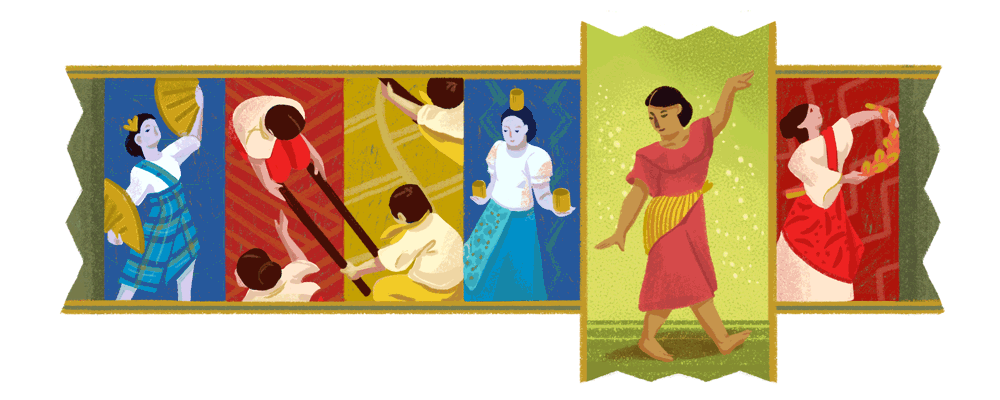
Today’s Doodle celebrates the life and work of Francisca Reyes-Aquino, the Filipino folk dancer and cultural researcher who helped preserve numerous Filipino cultural traditions including the tinikling— one of the country’s most well-known traditional dances. Countless other regional dance forms might have been lost forever if not for the efforts of Reyes-Aquino, who is often referred to as the “Mother of Philippine Dancing.”
Born on this day in 1899, Reyes-Aquino became interested in preserving the unique folk culture that thrived throughout the 7000+ islands that make up the Philippine archipelago. Earning a degree in Education from the University of the Philippines, she began traveling to rural communities with a small team of researchers to study the Filipino people’s unique songs, games, and dances. Recording and transcribing everything in detail, Reyes-Aquino shared her findings at recitals of the university’s folk dance troupe, helping to popularize and preserve dozens of dance forms through classes held by the university’s department of physical education.
Today’s animated Doodle depicts various Philippine traditional dances Reyes-Aquino helped document and preserve including the cariñosa, singkil, pandanggo sa ilaw, and the national favorite: tinikling. Named after a small, native bird that had long been the nemesis of local rice farmers, the dance is inspired by the bird’s hopping movements. Tinikling performers hop and skip skillfully between bamboo poles, creating a rhythmic combination of footwork and arm movements.
In 1954, Reyes-Aquino was awarded the Republic Award of Merit for her “outstanding contribution toward the advancement of Filipino culture.” She was also named a National Artist of Dance in 1973.
-
05-19-2021, 08:33 AM #3266
 Senior Member
Senior Member

- Join Date
- Oct 2016
- Posts
- 20,558
- Rep Power
- 464
14 Mar 2019
Carolina Maria de Jesus’ 105th Birthday
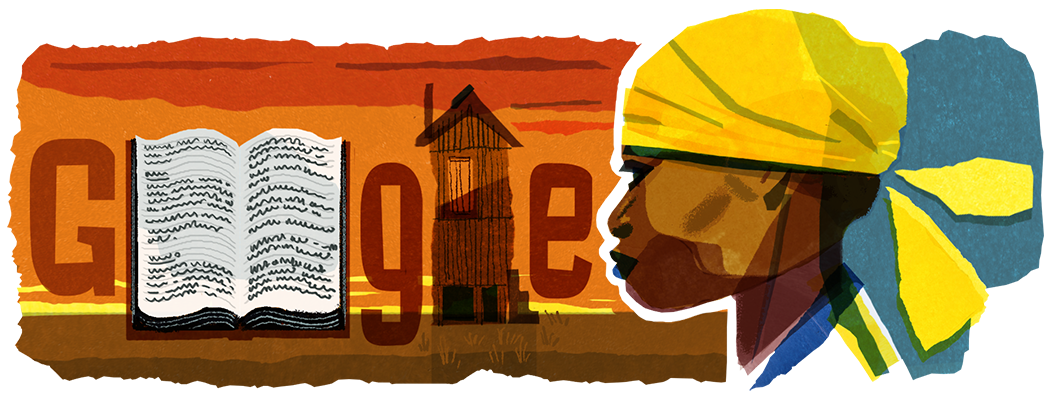
“Hunger is also a teacher. Who has gone hungry learns to think of the future and of the children.”—Carolina Maria de JesusNobody expected Carolina Maria de Jesus to become a world-famous author, but her first book, Quarto de Despejo: Diário de uma Favelada [published in English as Child of the Dark: The Diary Of Carolina Maria De Jesus] became an international bestseller. Born in Brazil on this day in 1914 to a single mother descended from slaves and sharecroppers, Carolina had a limited education. Still, her powerful prose highlighted the struggles of people living in São Paulo’s favelas, sprawling shanty towns in one of the world’s biggest cities.
While raising the first of her three children by herself, Carolina built a makeshift house from cast-off boards, plywood, and other found materials. She made a living as a domestic servant and by recycling paper, cans, and bottles to feed her family. Throughout this, she found time to keep a diary, filling old notebooks with the details of daily life in a world she described as the city’s “dumping room.”
In 1958 Audalio Dantas, a local newspaper reporter, overheard de Jesus exclaiming to a group of men that if they didn’t behave better she would put their names in her book. After asking to see the book, he was impressed with the power of her writing. “Her talent was really one of a kind,” said Dantas, who arranged for the diaries to be excerpted in the local newspaper.
Instantly, the article caused a sensation that led to Carolina’s first book selling 10,000 copies in just three days, becoming one of the most widely read books in Brazilian publishing history. It was eventually translated into 13 different languages and distributed in more than 40 countries, giving a voice to marginalized people and breaking new ground for black authors in Brazil and all over the world.
-
05-19-2021, 08:36 AM #3267
 Senior Member
Senior Member

- Join Date
- Oct 2016
- Posts
- 20,558
- Rep Power
- 464
18 Mar 2019
Celebrating Seiichi Miyake

Today’s animated Doodle celebrates Japanese inventor Seiichi Miyake, whose desire to help a close friend turned into an innovation that drastically improved the way those who are visually impaired navigate public spaces around the globe.
In 1965, Miyake spent his own money to invent tactile blocks [or Tenji blocks as they were originally known] to help a friend whose vision was becoming impaired. The blocks come in two predominant types: one with dots, and the other with bars. The dotted blocks alert the visually impaired when they are approaching danger, and can often be found at the edges of crosswalks and railway platforms. The barred blocks provide directional cues, letting users know that they are following a safe path.
Aside from identifying tactile tiles via a support or white cane, individuals also do so with the help of guide dogs or feeling them through their shoes, as portrayed in other drafts of the Doodle below:
Miyake’s tactile blocks were first introduced on a street near the Okayama School for the Blind in Okayama City, Japan on this day in 1967. Their use gradually spread before they and sound guides were made mandatory in the Japanese National Railways a decade later. Since then, tactile paving is now used around the world.
Today’s Doodle depicts the Google logo rendered in the style of Miyake’s tactile blocks, embossed against the familiar yellow background.
Last edited by 9A; 05-19-2021 at 08:38 AM.
-
05-19-2021, 08:42 AM #3268
 Senior Member
Senior Member

- Join Date
- Oct 2016
- Posts
- 20,558
- Rep Power
- 464
21 Mar 2019
Celebrating Johann Sebastian Bach

https://www.google.com/doodles/celeb...sebastian-bach
Johann Sebastian Bach was a German composer and musician of the Baroque period. He is known for instrumental compositions such as the Brandenburg Concertos and the Goldberg Variations, and for vocal music such as the St Matthew Passion and the Mass in B minor. Since the 19th-century Bach Revival, he has been generally regarded as one of the greatest composers of all time.Last edited by 9A; 05-19-2021 at 08:56 AM.
-
05-19-2021, 08:57 AM #3269
 Senior Member
Senior Member

- Join Date
- Oct 2016
- Posts
- 20,558
- Rep Power
- 464
21 March 2015
Cricket World Cup 2015 – Quarter-final No. 4 – New Zealand vs. West Indies
-
05-19-2021, 08:59 AM #3270
 Senior Member
Senior Member

- Join Date
- Oct 2016
- Posts
- 20,558
- Rep Power
- 464
24 Mar 2015
Cricket World Cup 2015 - Semi-finals #1 - New Zealand vs. South Africa

-
05-19-2021, 09:02 AM #3271
 Senior Member
Senior Member

- Join Date
- Oct 2016
- Posts
- 20,558
- Rep Power
- 464
26 Mar 2015
Hwang Sun-won’s 100th Birthday
Hwang Sun-wŏn was a Korean short story writer, novelist, and poet.
-
05-19-2021, 09:04 AM #3272
 Senior Member
Senior Member

- Join Date
- Oct 2016
- Posts
- 20,558
- Rep Power
- 464
26 Mar 2015
Bangladesh National Day 2015
-
05-19-2021, 09:06 AM #3273
 Senior Member
Senior Member

- Join Date
- Oct 2016
- Posts
- 20,558
- Rep Power
- 464
31 Mar 2015
126th Anniversary of the public opening of the Eiffel Tower
The Eiffel Tower is a wrought-iron lattice tower on the Champ de Mars in Paris, France. It is named after the engineer Gustave Eiffel, whose company designed and built the tower.
Locally nicknamed "La dame de fer" [French for "Iron Lady"], it was constructed from 1887 to 1889 as the entrance to the 1889 World's Fair and was initially criticised by some of France's leading artists and intellectuals for its design, but it has become a global cultural icon of France and one of the most recognisable structures in the world. The Eiffel Tower is the most-visited paid monument in the world; 6.91 million people ascended it in 2015.
The tower is 324 metres [1,063 ft] tall, about the same height as an 81-storey building, and the tallest structure in Paris. Its base is square, measuring 125 metres [410 ft] on each side. During its construction, the Eiffel Tower surpassed the Washington Monument to become the tallest man-made structure in the world, a title it held for 41 years until the Chrysler Building in New York City was finished in 1930. It was the first structure in the world to surpass both the 200 meter and 300 meter mark in height. Due to the addition of a broadcasting aerial at the top of the tower in 1957, it is now taller than the Chrysler Building by 5.2 metres [17 ft]. Excluding transmitters, the Eiffel Tower is the second tallest free-standing structure in France after the Millau Viaduct.
The tower has three levels for visitors, with restaurants on the first and second levels. The top level's upper platform is 276 m [9 06 ft] above the ground – the highest observation deck accessible to the public in the European Union. Tickets can be purchased to ascend by stairs or lift to the first and second levels. The climb from ground level to the first level is over 300 steps, as is the climb from the first level to the second. Although there is a staircase to the top level, it is usually accessible only by lift.Last edited by 9A; 05-19-2021 at 09:08 AM.
-
05-19-2021, 01:00 PM #3274
 Senior Member
Senior Member

- Join Date
- Oct 2016
- Posts
- 20,558
- Rep Power
- 464
31 Mar 2015
Seif Wanly’s 109th Birthday
Mohammed Seif al-Din Wanly was an Egyptian painter.
He introduced modern art to Egypt after studying at the studio of the Italian artist Otorino Becchi. In 1942 he set up his own studio with his brother Adham Wanly and together they participated in more than 17 exhibitions, notably in the Biennale of Venice and in São Paulo, Brazil. In the late 1950s,
Wanly travelled to Nubia to produce a series of paintings and drawings portraying life in Upper Egypt for a governmental project to document culture and conditions prior to the relocation that occurred to enable construction of the Aswan High Dam. Today an entire floor of the Mahmoud Said Museum in Alexandria is dedicated to Seif and Adham Wanly.
His work is collected by several Museums, including Mathaf: Arab Museum of Modern Art in Doha, Darat AL Funoon in Amman, and the Barjeel Art Foundation in Sharjah.Last edited by 9A; 05-19-2021 at 05:15 PM.
-
05-19-2021, 05:20 PM #3275
 Senior Member
Senior Member

- Join Date
- Oct 2016
- Posts
- 20,558
- Rep Power
- 464
14 Apr 2015
155th anniversary of the Pony Express
The Pony Express was a mail service delivering messages, newspapers, and mail using relays of horse-mounted riders that operated from April 3, 1860, to October 26, 1861, between Missouri and California in the United States of America.
Operated by Central Overland California and Pikes Peak Express Company, the Pony Express was of great financial importance to the U.S. During its 18 months of operation, it reduced the time for messages to travel between the Atlantic and Pacific coasts to about 10 days. It became the West's most direct means of east-west communication before the transcontinental telegraph was established [October 24, 1861], and was vital for tying the new U.S. state of California with the rest of the United States.
Despite a heavy subsidy, the Pony Express was not a financial success and went bankrupt in 18 months, when faster telegraph service was established. Nevertheless, it demonstrated that a unified transcontinental system of communications could be established and operated year-round. When replaced by the telegraph, the Pony Express quickly became romanticized and became part of the lore of the American West. Its reliance on the ability and endurance of individual young, hardy riders and fast horses was seen as evidence of rugged American individualism of the frontier times.
-
05-19-2021, 05:28 PM #3276
 Senior Member
Senior Member

- Join Date
- Oct 2016
- Posts
- 20,558
- Rep Power
- 464
14 Apr 2015
Khmer New Year 2015
Cambodian New Year or Khmer New Year, also called Choul Chnam Thmey, is the traditional celebration of the solar new year in Cambodia. A three-day public holiday in the country, the observance begins on New Year's Day, which usually falls on 13 April or 14 April, which is the end of the harvesting season, when farmers enjoy the fruits of their labor before the rainy season begins. Khmers living abroad may choose to celebrate during a weekend rather than just specifically 13 April through 16 April. The Khmer New Year coincides with the traditional solar new year in several parts of India, Bangladesh, Nepal, Sri Lanka, Myanmar, Laos and Thailand.Last edited by 9A; 05-19-2021 at 05:31 PM.
-
05-19-2021, 05:32 PM #3277
 Senior Member
Senior Member

- Join Date
- Oct 2016
- Posts
- 20,558
- Rep Power
- 464
14 Apr 2015
Bangladesh New Year 2015
-
05-19-2021, 05:34 PM #3278
 Senior Member
Senior Member

- Join Date
- Oct 2016
- Posts
- 20,558
- Rep Power
- 464
14 Apr 2015
B.R. Ambedkar’s 124th birthday
Bhimrao Ramji Ambedkar, also known as Babasaheb Ambedkar, was an Indian polymath - philosopher, jurist, economist, politician, social reformer, journalist, writer, sociologist, and anthropologist. He inspired the Dalit Buddhist movement and campaigned against social discrimination towards the untouchables [Dalits]. He was British India's Minister of Labour, Chairman of the Constituent Drafting committee, independent India's first Minister of Law and Justice, and considered the chief architect of the Constitution of India.Last edited by 9A; 05-19-2021 at 05:36 PM.
-
05-19-2021, 05:38 PM #3279
 Senior Member
Senior Member

- Join Date
- Oct 2016
- Posts
- 20,558
- Rep Power
- 464
15 Apr 2015
Start of Asparagus Season 2015
Only seasonally on the menu, asparagus dishes are advertised outside many restaurants, usually from late April to June. For the French style, asparagus is often boiled or steamed and served with Hollandaise sauce, White sauce, melted butter or most recently with olive oil and Parmesan cheese.
-
05-19-2021, 05:41 PM #3280
 Senior Member
Senior Member

- Join Date
- Oct 2016
- Posts
- 20,558
- Rep Power
- 464
17 Apr 2015
Cevat Şakir Kabaağaçlı’s 125th birthday
Cevat Şakir Kabaağaçlı was a Turkish writer of novels, short-stories and essays, as well as being a keen ethnographer and travelogue.
He is deeply associated with Bodrum where he started to live in 1925 when he was sentenced to three-years' exile, and he fell under the spell of the town. After serving the last part of his sentence in Istanbul, he returned and settled down in Bodrum where he lived for 25 years, whence his pen-name in reference to Halicarnassus, name of the city in antiquity. He is largely credited for bringing the formerly sleepy fishing and sponge-diving town of Bodrum, as well as the entire shoreline of the Blue Cruise, to the attention of the Turkish intelligentsia and the reading public first, and by extension, for paving the way towards the formation of international tourist attraction the region became.
-
05-19-2021, 06:52 PM #3281
 Senior Member
Senior Member

- Join Date
- Oct 2016
- Posts
- 20,558
- Rep Power
- 464
21 Apr 2015
81st anniversary of the Loch Ness Monster's most famous photograph
Colonel Robert Wilsons grainy photograph of Nessie made a big splash. The iconic image of a sea serpent rising out of the water paved the way for the myth of the Loch Ness Monster.
Last edited by 9A; 05-19-2021 at 06:59 PM.
-
05-19-2021, 06:59 PM #3282
 Senior Member
Senior Member

- Join Date
- Oct 2016
- Posts
- 20,558
- Rep Power
- 464
22 Apr 2015
Earth Day 2015
-
05-19-2021, 07:04 PM #3283
 Senior Member
Senior Member

- Join Date
- Oct 2016
- Posts
- 20,558
- Rep Power
- 464
23 Apr 2015
Shoen Uemura’s 140th birthday
Uemura Shōen was the pseudonym of an important artist in Meiji, Taishō and early Shōwa period Japanese painting. Her real name was Uemura Tsune. Shōen was known primarily for her bijin-ga paintings of beautiful women in the nihonga style, although she produced numerous works on historical themes and traditional subjects. Shōen is considered a major innovator in the bijin-ga genre despite the fact she often still used it to depict the traditional beauty standards of women. Bijin-ga gained criticism during the Taisho era while Shōen worked due to its lack of evolution to reflect the more modern statuses of women in Japan. During bijin-ga's conception in the Tokugawa, or Edo, period, women were regarded as lower class citizens and the genre often reflected this implication onto its female subjects. Within the Taisho era, women had made several advancements into the Japanese workforce, and artistry specifically was becoming more popular outside of pass times for the elite, which opened way for Shōen's success.Last edited by 9A; 05-19-2021 at 07:07 PM.
-
05-19-2021, 08:54 PM #3284
 Senior Member
Senior Member

- Join Date
- Oct 2016
- Posts
- 20,558
- Rep Power
- 464
24 Apr 2015
Doodle 4 Google 2015 – Russia Winner
-
05-19-2021, 08:57 PM #3285
 Senior Member
Senior Member

- Join Date
- Oct 2016
- Posts
- 20,558
- Rep Power
- 464
27 April 2016
Freedom Day 2016

This important day marks the time that South Africa broke long-standing boundaries created by apartheid with its first ever democratic election. On this historic occasion, citizens of all races and backgrounds could finally vote. Freedom Day has become a symbol of peace, unity, and the hard-earned freedom now enjoyed throughout the country.
-
05-19-2021, 08:59 PM #3286
 Senior Member
Senior Member

- Join Date
- Oct 2016
- Posts
- 20,558
- Rep Power
- 464
27 Apr 2016
King's Day 2016

For King’s Day, or Koningsdag, the Dutch come together to celebrate the birth of their current king, Willem-Alexander. Celebrants wear orange in honor of the royal family’s house color, making King’s Day one of the most vivid of the year.
On this day, the streets are flooded with decorations and orange-clad locals on their way to outdoor concerts and festivities. This is also the one day in which street sales are allowed without a permit, bringing sellers and shoppers out in droves for the flea markets that pop up everywhere.
This year’s doodle highlights the tompouce, a local cream-rich pastry commonly frosted in orange for the occasion. Ga Oranje!
-
05-19-2021, 09:02 PM #3287
 Senior Member
Senior Member

- Join Date
- Oct 2016
- Posts
- 20,558
- Rep Power
- 464
1 May 2016
Labour Day 2016

Labour Day is a public holiday honoring the many achievements of labor unions since the 1800s — in particular, the 8 hour working day. Reasonable wages, breaks, and paid vacation are all important to a fair and healthy economy. In some places, people spend the day protesting current labor conditions, attending public demonstrations, and events. Others attend festivals, concerts, or get together with family and friends. Some just spend the day not working.
The day originated in the United States during the Labour Movement that started in the state of Illinois. Now, it's observed in over 90 countries worldwide.
-
05-19-2021, 09:04 PM #3288
 Senior Member
Senior Member

- Join Date
- Oct 2016
- Posts
- 20,558
- Rep Power
- 464
8 May 2016
Parent's Day in Korea

Mom and Dad are so much more than that. In fact, in many ways, they’re our first brush with superhero. Doodler Juliana Chen chose to bring this truism to life in this year’s illustration for Parents’ Day in Korea. Thank you, parents! Enjoy your day.
-
05-19-2021, 09:15 PM #3289
 Senior Member
Senior Member

- Join Date
- Oct 2016
- Posts
- 20,558
- Rep Power
- 464
14 May 2016
Long Night of Museums 2016
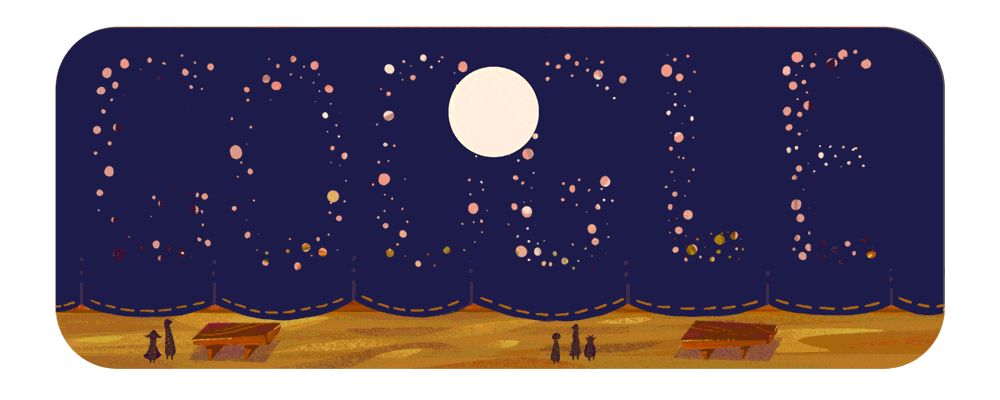
Tonight, museums across Europe will take part in the Long Night of Museums. On this night, local cultural institutions will stay open extra-late to celebrate culture, science, and education.
Many museums provide free admission tonight with some cities also subsidizing public transport during this time. Check to see if your local exhibits are open to the public, and enjoy the treasures of our past.
-
05-19-2021, 09:44 PM #3290
 Senior Member
Senior Member

- Join Date
- Oct 2016
- Posts
- 20,558
- Rep Power
- 464
1 June 2017
ICC Champions Trophy 2017 Begins!
Ah, summer: the sound of leather on willow, and the spectacle of cricket ... cricket! As the tournament begins in the Oval cricket ground, something buzzes outside. A team of crickets sans tickets have set up their own wickets for a game of pest cricket! As they face their archrivals, the snails, it’s sure to be a match for the centuries. Don’t be fooled by their sluggish looks — these fielders can be fast on their feet!
To celebrate the 2017 ICC Champions Trophy, we’re inviting everyone to tap/click and take a swing at our pocket-size game!
We know that cricket is loved worldwide, so we wanted to make sure our Doodle works for everyone, including those on slower mobile networks. We kept the file size fly-sized, and the result is our smallest interactive Doodle ever — even snail networks can load it in seconds.
Whether you're enjoying the tournament at a snail’s pace or bowling faster than the beat of a hummingbird's wings, here's hoping you hit it out of the park this summer!
-
05-19-2021, 09:49 PM #3291
 Senior Member
Senior Member

- Join Date
- Oct 2016
- Posts
- 20,558
- Rep Power
- 464
3 Jun 2017
Josephine Baker's 111th Birthday
With her kohl-rimmed eyes and exotic costumes, Josephine Baker pounced onto the global stage in the 1920s, becoming a Jazz Age icon and one of the first internationally recognized African-American entertainers.
Born into a vaudevillian family on June 3, 1906, Baker took up the family trade as a teenager. Her early days were spent dancing in public spaces for spare change. She eventually made her way to New York City at the dawn of the Harlem Renaissance, where she joined the chorus line of Shuffle Along, the first all-black Broadway musical. From there, she set off for Paris and found her fame and artistic home in the city’s opulent cabarets, singing and performing uninhibited dance routines that celebrated female liberation and African cultural identity.
A celebrity in Europe – and one of the most photographed women on the planet – Baker nonetheless faced racially charged comments from the press when she returned to the U.S. in 1936 for a short-lived starring turn in the Broadway series Ziegfeld Follies. Championing diversity and fighting for civil rights would become an enduring concern throughout her life. She refused to perform for segregated audiences and worked closely with the NAACP. In 1963, she participated in the March on Washington as the only female speaker to officially address the crowd, which she described as looking like "salt and pepper. Just what it should be." Her family life also mirrored her ideals. She adopted 12 children from around the world, affectionately referring to them as her Rainbow Tribe.
As if all that weren’t enough for one life, Baker had a secret career with the French resistance during World War II, socializing with Axis officials at high-society parties and using her cover as a country-hopping celebrity to gather intelligence — often writing it on her sheet music in invisible ink. Following the war, she was awarded the Croix de Guerre and inducted by Charles de Gaulle into France’s prestigious Legion of Honour.
There’s little doubt why Ernest Hemingway once called her "the most sensational woman anybody ever saw—or ever will."
-
05-19-2021, 09:54 PM #3292
 Senior Member
Senior Member

- Join Date
- Oct 2016
- Posts
- 20,558
- Rep Power
- 464
12 November 2018
Alexander Borodin’s 185th Birthday

The son of a Georgian prince, Alexander Porfiryevich Borodin was a sickly child who went on to create a powerful legacy in two different fields. Today’s Doodle celebrates the boy who grew up to become both a distinguished chemist and one of Russia’s greatest classical composers.
Born in St. Petersburg on this day in 1833, Borodin showed an early aptitude for science, languages, and music. While mastering German, French, and English, he began studying flute at age eight and later learned the violin and violoncello. By the age of 13 he’d already composed a piece for flute and piano — nevertheless, he considered music to be a hobby while his main focus was in the field of science.
At 17, Borodin began his studies at St Petersburg’s Medico-Surgical Academy, delving into botany, zoology, anatomy, and crystallography—but he soon specialized in organic chemistry, earning his doctorate in 1858. He went on to become a professor at his alma mater, conducting research on benzene derivatives and organic synthesis, and the discovery of the aldol reaction. He’s also remembered as a champion of women’s rights, having founded the Women’s Medical School in St. Petersburg, where he taught for many years. Still, the music kept calling him.
In the 1860s he met Mily Alexeyevich Balakirev, a pianist and composer who would become his musical mentor. Borodin soon made him part of a group known as “The Five” [aka “The Mighty Handful”] whose goal was to develop a distinctly Russian style of classical music. Borodin’s incorporation of traditional folk music, and his striking use of harmony in works like “The Steppes of Central Asia,” made him a leading figure of the Romantic era.
Championed by such fellow composers as Liszt, Debussy, and Ravel, Borodin’s work has had a lasting influence on classical music. His unforgettable melodies were adapted for Kismet, the Tony-Award-winning musical that went from Broadway to Hollywood with songs like “Stranger in Paradise.”
-
05-20-2021, 07:18 AM #3293
 Senior Member
Senior Member

- Join Date
- Oct 2016
- Posts
- 20,558
- Rep Power
- 464
14 Nov 2018
Doodle 4 Google 2018 – India Winner

The winner of the 2018 Doodle 4 Google competition in India is Pingla Rahul More of J. B. Vachha High School in Mumbai. Pingla and 75000+ other contestants from around the country produced amazing works in response to this year’s theme of “What inspires me?”.
Pingla Rahul won among the five very talented age group finalists with her Doodle "Galaxy, Space Exploration”. She writes --
“In my Doodle, I demonstrated what inspires me. I am extremely inspired by Space Exploration as there is still so much more to know about our Universe -- from planets to stars to galaxies and beyond. It is inspiring to learn how small we are, and how small our problems are, in the grand scheme of things. To convey my idea, I drew myself trying to see the expanse of the space through a telescope, I created galaxies, planets and spacecraft to represent the vastness of things in space. [carefully arranged to represent each letter in the Google logo].”
-
05-20-2021, 07:25 AM #3294
 Senior Member
Senior Member

- Join Date
- Oct 2016
- Posts
- 20,558
- Rep Power
- 464
16 Nov 2018
44th Anniversary of the Arecibo Message

Forty-four years ago today, a group of scientists gathered at the Arecibo Observatory amidst the tropical forests of Puerto Rico to attempt humankind’s first communication with intelligent life beyond our own planet. Their three-minute radio message—a series of exactly 1,679 binary digits [a multiple of two prime numbers] which could be arranged in a grid 73 rows by 23 columns—was aimed at a cluster of stars 25,000 light years away from earth.
This historic transmission was intended to demonstrate the capabilities of Arecibo’s recently upgraded radio telescope, whose 1000-foot-diameter dish made it the largest and most powerful in the world at the time. "It was strictly a symbolic event, to show that we could do it," said Donald Campbell, Cornell University professor of astronomy, who was a research associate at the Arecibo Observatory at the time. Nevertheless some of those present were moved to tears.
The message itself was devised by a team of researchers from Cornell University led by Dr. Frank Drake—the astronomer and astrophysicist responsible for the Drake Equation, a means of estimating the number of planets hosting extraterrestrial life within the Milky Way galaxy. ‘‘What could we do that would be spectacular?’’ Drake recalled thinking. “We could send a message!’’
Written with the assistance of Carl Sagan, the message itself could be arranged in a rectangular grid of 0s and 1s to form a pictograph representing some fundamental facts of mathematics, human DNA, planet earth’s place in the solar system, and a picture of a human-like figure as well as an image of the telescope itself.
Since the Arecibo Message will take roughly 25,000 years to reach its intended destination [a group of 300,000 stars in the constellation Hercules known as M13], humankind will have to wait a long time for an answer. How long? In the 44 years since it was first transmitted, the message has traveled only 259 trillion miles, only a tiny fraction of the 146,965,638,531,210,240 or so miles to its final destination. During that same time, our understanding of the cosmos has advanced by leaps and bounds, raising hopes that someone may be out there, listening.Last edited by 9A; 05-20-2021 at 07:27 AM.
-
05-20-2021, 07:40 AM #3295
 Senior Member
Senior Member

- Join Date
- Oct 2016
- Posts
- 20,558
- Rep Power
- 464
22 Nov 2018
Loy Krathong 2018

Today’s Google celebrates Loy Krathong, Thailand’s festival of lights. On the night of the full moon in the 12th lunar month of the traditional Thai calendar, Thailand celebrates the end of rain season with this ritual. The word “loy” means to float, while “krathongs” are small baskets traditionally made from banana tree wood and carefully folded banana leaves, each containing sticks of incense, candles, and an offering of a few coins for the water goddess. It’s also customary to include locks of hair and fingernail clippings to symbolize letting go of the past and any unhappy feelings.
According to legend, the festival was originated by Nang Noppamas, consort to a king. Beauty pageants in her honor remain a traditional part of Loy Krathong celebrations. Others insist that the tradition was inspired by the Khom Loy festival, a Buddhist ritual giving thanks to Ganga, the Goddess of Water. Similar full moon festivals are celebrated at this time of year throughout the region.
In the city of Sukhothai, celebrants flock to the banks of the Yom river, floating their krathongs by the ancient temple in Sukhothai Historical Park. In Bangkok it’s the Chao Phraya River, and in Tak it’s the Ping. Wherever you celebrate, Loy Krathong is a joyous occasion with beautiful lights on the water, fireworks and lanterns in the sky, and a song in the air.
-
05-20-2021, 07:45 AM #3296
 Senior Member
Senior Member

- Join Date
- Oct 2016
- Posts
- 20,558
- Rep Power
- 464
23 Nov 2018
Valdemar Poulsen’s 148th Birthday

Today’s Doodle celebrates Valdemar Poulsen, a Danish engineer whose innovations made magnetic sound recording and long-range radio transmission possible. Many modern conveniences, from telephone answering machines to cassettes, even VHS tapes and floppy disks, used the basic technology that he developed by stringing a steel piano wire at a slight angle between two walls. By sliding an electromagnet down the wire he was able to record sound using a microphone and play it back through a telephone earpiece.
Born in Copenhagen on this day in 1869, Poulsen studied medicine for a time before joining the Copenhagen Telephone Company as a technician. During his time he invented the telegraphone—or telegrafon in Danish–– and was awarded a patent. The cylindrical electromagnetic phonograph was capable of recording up to thirty minutes of speech. In 1900 he showed off his device at the Exposition Universelle in Paris, where he recorded the voice of Austrian emperor Francis Joseph—still the earliest surviving magnetic recording. After winning a Grand Prix in Paris, he founded the American Telegraphone Company, but sales were sluggish as the device was truly ahead of its time.
That same year brought another breakthrough, a “singing arc” radio that would transmit up to 150 miles. Subsequent improvements of this design, capable of reaching 2,500 miles, were eventually used by the U.S. Navy.
Although he dropped out of medical school, Poulsen was awarded an honorary doctorate from the University of Leipzig. He was also a Fellow of the Danish Academy of Technical Science and the Swedish Institute for Engineering Research, and won the Gold Medal of the Royal Danish Society of Science and th e Danish Government Medal of Merit. A stamp was issued in his honor and the Danish Academy of Technical Sciences established an annual award in his name.Last edited by 9A; 05-20-2021 at 07:48 AM.
-
05-20-2021, 08:07 AM #3297
 Senior Member
Senior Member

- Join Date
- Oct 2016
- Posts
- 20,558
- Rep Power
- 464
23 Nov 2018
Nikolai Nosov’s 110th Birthday

Blending fairy tales, fantasy, and science fiction, Nikolai Nosov wrote children’s literature whose playful prose delivered powerful insights into human nature. His short stories like “Alive Hat,” “Cucumbers,” and “Miraculous Trousers,” and a humorous trilogy of novels about the misadventures of a very small boy named Neznaika [whose name translates as “Know-Nothing” in English] made Nosov a favorite of young readers all over Russia and beyond.
Born on this day in 1908 in Kiev, Ukraine, Nosov attended the Moscow Institute of Cinematography and worked as a producer of animated educational films before he began publishing fiction, often in popular children’s magazines like Murzilka. In 1952 his endearing novel Vitya Maleev at School and at Home was awarded the Stalin Prize, the Soviet Union’s state award, elevating his profile as a writer considerably. The book was later adapted into a comic film called Two Friends.
In 1954 he published the first volume of the Neznaika trilogy—in both Russian and Ukrainian—with two subsequent novels in the series appearing in 1958 and 1967. Set within a town in fairyland populated by tiny people called “Mites” who are “no bigger than a pine cone,” the action centers around an impulsive and easily distracted boy whose belief that he knows everything is always getting him into trouble. In 1969, Nosov won a new literary prize for his trilogy, which has since been adapted into numerous film versions, endearing his characters to countless generations of readers as parents who grew up on Neznaika grow up and the books to their own children.
-
05-20-2021, 08:44 AM #3298
 Senior Member
Senior Member

- Join Date
- Oct 2016
- Posts
- 20,558
- Rep Power
- 464
23 Nov 2018
Mestre Bimba’s 119th Birthday

A blend of martial arts, acrobatics, dance, and music, Capoeira has been practiced in Brazil for hundreds of years. Today’s Doodle celebrates Manuel dos Reis Machado, or Mestre Bimba, the master who legitimized capoeira and founded the world’s first school to promote this Afro-Brazilian martial arts style.
Mestre Bimba was born in Salvador, the capital of Bahia, on this day in 1899 as the youngest of 25 children and son of a batuque champion, another Brazilian fighting game. His parents named him Manuel dos Reis Machado, but everyone called him Bimba. He worked various odd jobs – longshoreman, carpenter, and coal miner – before dedicating his life to his real passion of capoeira.
Developed by former slaves, Capoeira was outlawed by the Brazilian government for many years. “In those days, when capoeira was spoken of, it was in whispers,” Bimba recalled. “Those who learned capoeira only thought about becoming criminals.”
As studying martial arts was forbidden by law, music was added to disguise the powerful fighting techniques as dance moves. Developing his own style, known as capoeira regional, Mestre Bimba instituted a strict set of rules and a dress code. In 1928 he was invited to demonstrate his style of capoeira for Getulio Vargas, then president of Brazil. The President was so impressed that he gave Mestre Bimba the go-ahead to open the first capoeira school in his hometown of Salvador, giving this unique martial art a new sense of legitimacy. In 2014 capoeira was recognized as Intangible Cultural Heritage of Humanity by UNESCO, which hailed it as one of the most expressive popular manifestations of the Brazilian culture.
-
05-20-2021, 08:46 AM #3299
 Senior Member
Senior Member

- Join Date
- Oct 2016
- Posts
- 20,558
- Rep Power
- 464
24 Nov 2018
Charles-Michel de l'Épée’s 306th Birthday

Today’s Doodle honors the Abbé Charles-Michel de l'Épée, a French educator who founded the first public school for the deaf. Dispelling the misconception that people with impaired hearing were incapable of learning, Épée developed a visual method that became the blueprint for the teaching of the deaf in France and that changed countless lives at a time when many deaf people were discriminated against.
"Every deaf-mute sent to us already has a language," he wrote. "He is thoroughly in the habit of using it, and understands others who do. With it he expresses his needs, desires, doubts, pains, and so on, and makes no mistakes when others express themselves likewise.”
Born in Versailles on this day in 1712, Épée was the son of an architect who studied theology and law before devoting his life to serving the poor. He began tutoring two deaf sisters who lived in the slums of Paris and who communicated through their own sign language. In 1760, he used his own inheritance to found the Institution Nationale des Sourds-Muets à Paris, a school for the deaf that was open to all regardless of their ability to pay.
The French National Assembly eventually recognized him as a "Benefactor of Humanity" and asserted the rights of deaf people under France’s Declaration of the Rights of Man and of the Citizen. His school went on to receive government funding and remains open to this day renamed as Institut National de Jeunes Sourds de Paris.
-
05-20-2021, 08:49 AM #3300
 Senior Member
Senior Member

- Join Date
- Oct 2016
- Posts
- 20,558
- Rep Power
- 464
27 Nov 2018
Fe del Mundo’s 107th Birthday

“I’m glad that I have been very much involved in the care of children, and that I have been relevant to them,” says Filipina physician Fe del Mundo. “They are the most outstanding feature in my life.”
Born in Manilla on this day in 1911, del Mundo was inspired to study medicine by her older sister who did not herself live to realize her dream of becoming a doctor. Also known as “The Angel of Santo Tomas,” del Mundo devoted her life to child healthcare and revolutionized pediatric medicine in the process.
A gifted student who became the first woman admitted to Harvard Medical School, del Mundo returned home after completing her studies in the U.S. During World War II, she set up a hospice where she treated more than 400 children and later became director of a government hospital. Frustrated with the bureaucracy, she eventually sold her house and belongings to finance the first pediatric hospital in the Philippines. Del Mundo lived on the second floor of the Children's Medical Center in Quezon City, making early morning rounds until she was 99 years old, even in a wheelchair.
When she wasn’t treating patients she was teaching students, publishing important research in medical journals, and authoring a definitive ‘Textbook of Pediatrics.’ She established the Institute of Maternal and Child Health to train doctors and nurses, and became the first woman to be conferred the title National Scientist of the Philippines and received many awards for her outstanding service to humankind.




 Reply With Quote
Reply With Quote

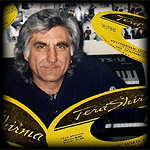

Bookmarks